One of the most acclaimed experiences of this year (selected at Sundance New Frontier and SXSW) is Australian… and lasts 24 hours! With a form of immersion that defies temporality, to better observe the impact of man on nature, GONDWANA invites as much to contemplation as to ecological warning. Meet its director, Ben Joseph Andrews, and producer Emma Roberts.
From film studies to virtual abstraction
Ben Joseph Andrews – Emma and I studied cinema theory at university. We met while writing our theses. When I developed an interest in immersive creation, I asked her to help me answer calls for projects and find the necessary funds.
Emma Roberts – The idea of immersive creation gradually imposed itself on us with a desire to produce something that traditional cinema could not do. Especially on experimental, abstract works. We found funds to conceive our first experience, which was both an installation and a stage performance. It was very different from our previous films, and strangely addictive! The interaction with the live audience, the physicality of the installation…
B. J. A. – It was only afterwards that we learned all the vocabulary: Location-based, etc. We set out to explore all the potential of these new immersions, and to integrate audiovisual and technological elements into an artistic proposal.

Producing a 24-hour project: GONDWANA
B. J. A. – In 2017 we also created a multi-sensory installation, STARLESS, which on certain themes is a sort of spiritual predecessor to GONDWANA. STARLESS was based around the archetype of a near-death experience, with a mix of virtual reality, immersive theatre and live music. Like Gondwana, it also explored awe and wonder as a means to transcend our reality and perception. The feedback from the audience was great, but we couldn’t really develop the concept beyond one-off performances. It was a specific installation for a single location, a warehouse. But the audience responses showed us that there was power in these sorts of experiences, and we wanted to create something that was travellable and used that power for a cause we’re passionate about. We developed GONDWANA as a multi-sensory and mobile installation (LBE), which could tour in several places or even several countries. There were sounds, smells of the rainforest to recreate the sensation of being in the Daintree. And then the Covid-19 arrived…
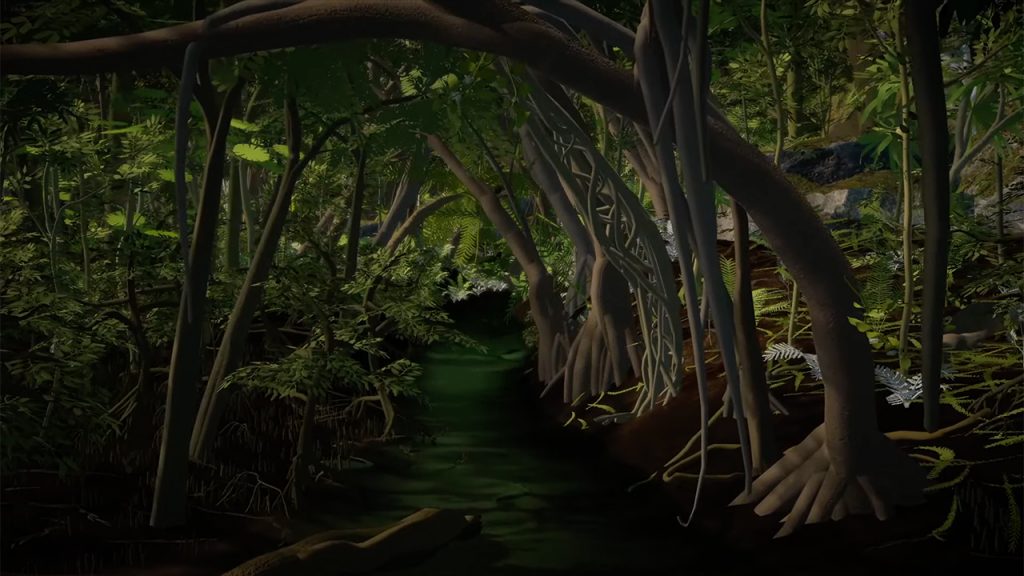
E. R. – So GONDWANA evolved into an online experience. This allowed us to free ourselves from the concept of location-based only, in a time of global pandemic that made a physical proposition impossible. We deeply love the social aspect of virtual reality, going beyond the status of a single viewer. So we revised the story in that sense. We wanted to talk about climate change, with a notion of time passing and a real wandering to create wonder but also to invite the audience to question what they’re seeing. Playing with the duration of the experience was one of the levers that imposed itself on us.
B. J. A. – We didn’t have any goals during production, nor did we really have any benchmarks. There are long-lasting audiovisual works, but it’s relatively rare. You can think of John Cage’s work Organ2 for example. But we had references for certain moments that we wanted to create, and we tried to replicate them for a live experience. We wanted to make sure that the environment would support multi-user sessions (up to 2000 per session) without diminishing the quality of the experience. We needed to lay down several principles like this, to provide a similar exploration for everyone.
E. R. – With a short timeline, we couldn’t test everything we wanted before the official presentations. So we learned a lot from our first few days at Sundance, especially about the audience… And the feedback was interesting and positive! Many spectators came back at different moments of the experience. This reinforced our choices.
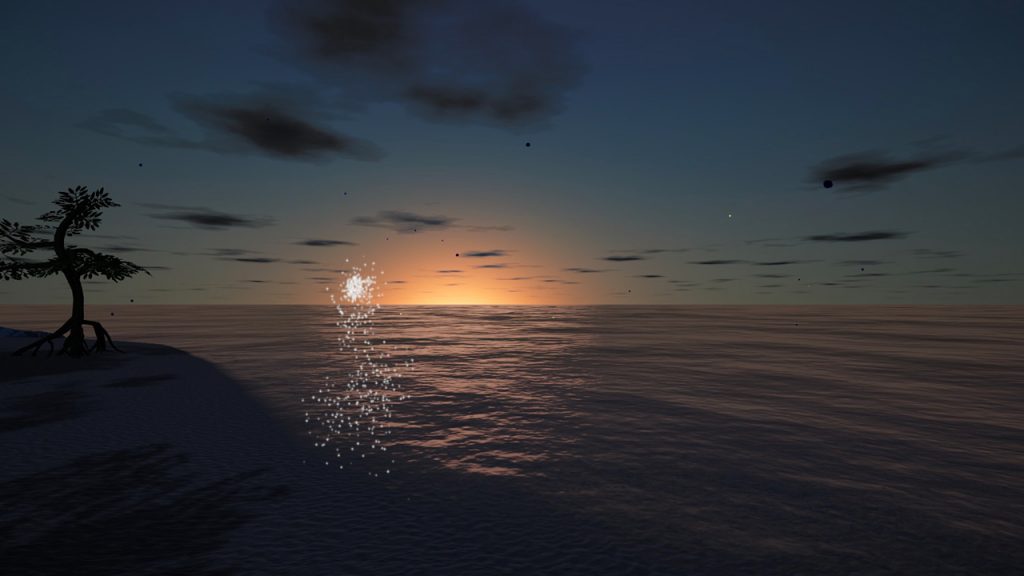
B. J. A. – Whether it was in reviews or on social media, it was interesting to see the feedback. GONDWANA is by nature a very organic experience. There is obviously a narrative structure set up when you enter the experience. But once you’re in, what you discover, what you encounter, what you want to do: we don’t control anything. You lose or gain information, depending on your choices. At the time of the premiere, we didn’t know how people were going to use it all – with so much time in the experience. Because it’s both huge, and ultimately little time spent on the topic of the climate crisis.
Feeling time passing by in virtual reality
B. J. A. – GONDWANA can be experienced in many ways. It is necessary to have a free spirit above all! Some people see the beauty of the environment, or its strangeness, its uniqueness. Others will see sadness, anger. In 24 hours (with an accelerated climate crisis in the experience) we lose a lot of biodiversity, fauna and flora.
B. J. A. – Comparing this type of story with cinema is interesting. On the notion of time passing, we created 6-minute days. That’s pretty fast…
E. R. – … And it is quite realistic in a way, because we see our shadows moving with the sun! We also worked on time jumps: every 14 minutes we go forward one year. This notion of time becomes very elastic.
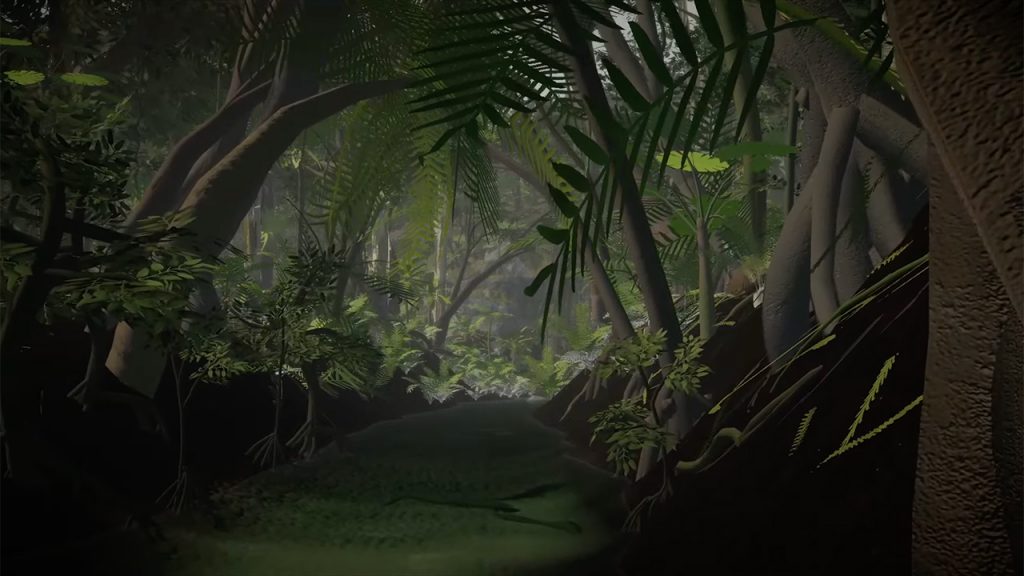
B. J. A. – We wanted the viewer to feel this, to feel, to vibrate with this rhythm. A film is in essence modelled on the passing of time. With virtual reality, we can try to detach ourselves from it, or even become impregnated by it. The environment surrounds us, with its own rules. We evolve with it. This is the case in GONDWANA. Basically, each spectator undergoes these temporal cycles. We go out of the frame of the cinema, we integrate a space to 100%. Finally we have created a small metaverse! With its own rules, its own possibilities… and its own freedom. At some stages, we as creators didn’t even know what was going to happen.
E. R. – Designing such an experience is obviously a real technical challenge. The environment was entirely modelled in Tiltbrush, and is hosted in the cloud. Above all, we had to imagine an environment that was neither repetitive nor boring. And that the spectators can visit at any time! Each moment is unique, visually or by sound. We had to consider each “sequence” to ensure that the entire 24 hours were coherent. And even for us, it was impossible to review everything! We know what exists in the experience, but not when to find it. With each viewing we find things again. At most, we spent 4 hours in one viewing – but in total several hundred hours. For the spectators, some stayed up to 16 hours in a row!
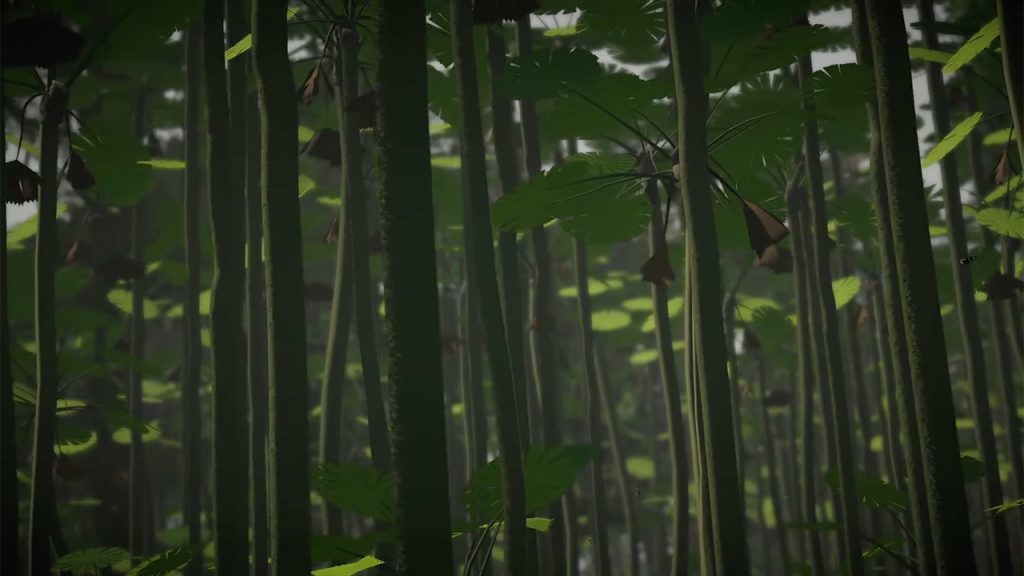
Spending real time in the forest: an immersive residency
E. R. – We were fortunate to have a residency to develop the project, thanks to Creative Victoria, which allowed us to live for several months in the heart of the Daintree Rainforest. We stayed during the rainy season, and it was very important that year! We lived without electricity, without the internet and could fully enjoy this immersion in the middle of nature. We got used to the rhythm of the surrounding nature, to our encounters with the few people who lived there. These encounters were very important for us, collecting stories, learning from scientists studying climate change…
E. R. – It is important to understand that the forest itself is rapidly degrading. It remains a very fragile context, and particularly sensitive to climate change. It is a real case study on our society, our consumption of fossil fuels and their consequences on nature. It allowed us to understand and develop our reasoning on this point. And then we had to import it into the experiment!

Sundance, SXSW… and after?
E. R. – We are now looking at future developments of GONDWANA, whether it is an exhibition in places (in Australia to begin with) or an online distribution. We are interested in both, with the possibility of presenting the project to a maximum audience. And an online distribution offers a certain kind of freedom for the viewers. But we could link the two, for example by having a simultaneous screening in a theatre and on an online platform. The feedback from Sundance has been very encouraging.
B. J. A. – A physical installation with sound, smells… That would be something we would love to design! We come from that, and it would be great to continue talking with galleries, museums to propose that. And to consider places able to welcome spectators for several tens of hours, for example! There are many things to imagine. What we showcase in festivals is, I hope, a preview of that.
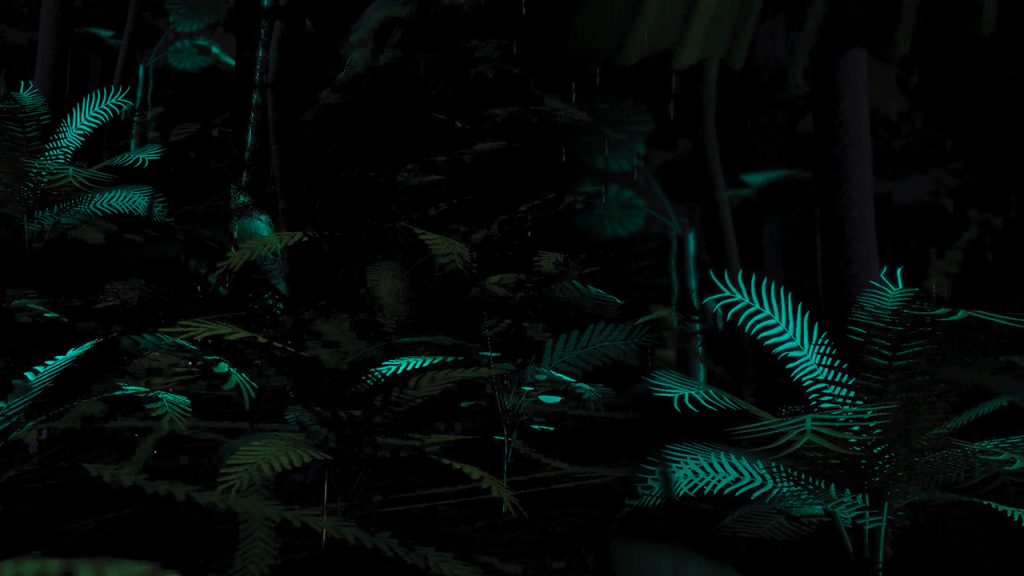

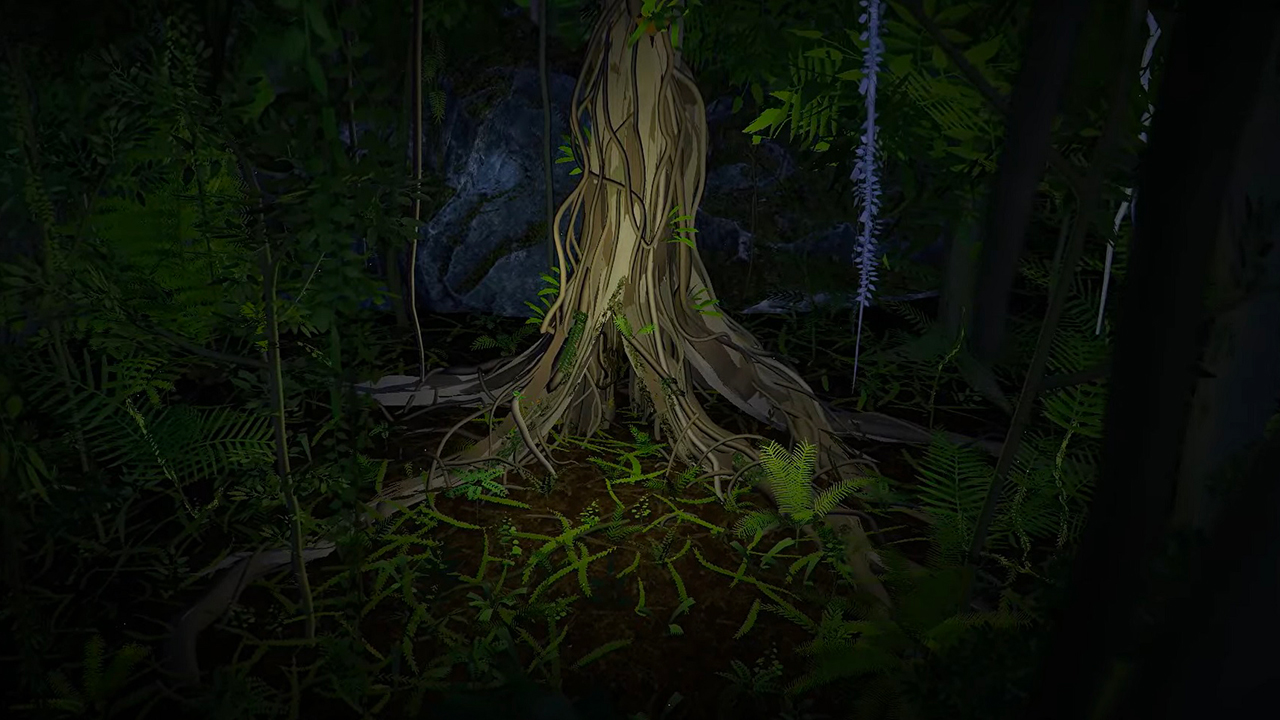

Leave a Reply
You must be logged in to post a comment.